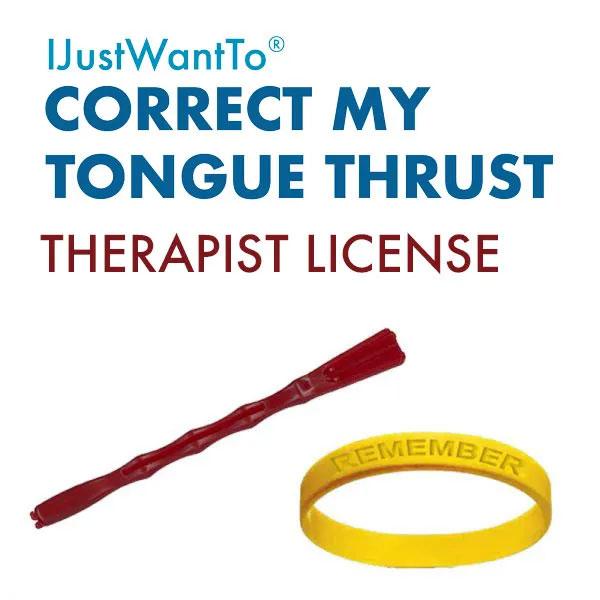Five Reasons You Might Be Seeing Your Child’s Tongue
The reasons you might frequently see your child's tongue vary, including natural developmental phases, habitual patterns, and specific health concerns. Here's a deeper dive into these factors and their implications.
1) Developmental Stages And Tongue Visibility
Everyone is born with a tongue thrust. Do not be alarmed to see your baby’s tongue sticking out a lot! By the age of 12 months, this reflex should start disappearing. If your child continues to suck thumb, pacifier, etc for a few years after age 1, a tongue thrust will probably develop. You may decide that you should not encourage continued sucking.
In your child’s early years, infants and toddlers often have smaller oral cavities relative to the size of their tongue, coupled with a natural curiosity to explore their world orally. This developmental phase is both normal and temporary. As children grow and their facial structures mature, the proportion of the tongue's visibility usually decreases.
2) Your Child May Have Developed Tongue Thrust
Tongue thrusting is a condition where the tongue pushes too far forward during swallowing, speech, or when the mouth is at rest. This habit can be problematic, leading to dental and speech issues if unaddressed.
Key signs of tongue thrust include:
- The tongue protruding between the teeth especially noticeable when talking, swallowing, or resting
- Speech articulation issues, particularly with sounds that require tongue-tip elevation or retraction
- Development of an open bite, where there's a noticeable gap between the upper and lower front teeth when the mouth is closed
- Breathing problems, notably while sleeping
- Snoring and sleep apnea
- Mouth breathing
- Crowded or misaligned teeth
- Poor oral hygiene
- Social anxiety and self-consciousness due to the appearance of the tongue
3) The Role Of Breathing And Airway Issues
Children who breathe through their mouths due to nasal congestion, allergies, or enlarged tonsils often rest their tongues in a forward position to maintain an open airway. While this adaptation may seem harmless at first, it can lead to long-term orthodontic and health issues.
Mouth breathing is common in children who are experiencing tongue thrust.
4) Speech And Language Development
The visibility of the tongue can also be a normal part of speech and language development. As children learn to produce new sounds and words, their tongue movements become more pronounced. This is generally a temporary phase that improves with practice and age.
5) Sensory Processing And Oral Exploration
For children, especially those with developmental conditions like autism, the tongue serves as a tool for exploring their environment, leading to increased visibility. This sensory-seeking behavior is a way to gather information about textures, temperatures, and tastes. If the tongue's visibility is paired with other signs of autism, parents should speak to their pediatrician.
Some Potential Long-Term Impacts Of Tongue Visibility
If not addressed, prolonged tongue visibility due to habits like tongue thrusting or underlying health issues can have several negative consequences:
- Orthodontic Challenges: Constant pressure against the teeth from the tongue can lead to misalignments and bite issues, often necessitating corrective treatment.
- Speech Impediments: Difficulties with articulation and clarity can affect communication skills and self-esteem.
- Social Concerns: Children may become self-conscious, especially if their peers notice and comment on their tongue's visibility.
Seeking Professional Insight About Your Child’s Protruding Tongue
It's important to consult with a healthcare professional if:
- The tongue's visibility persists beyond the early developmental stages
- There are noticeable difficulties with speech articulation
- Signs of dental misalignment or habitual mouth breathing are present
Experts like pediatric dentists, orthodontists, and speech therapists can provide valuable assessments and recommend interventions tailored to your child's needs. Depending on your child’s level of maturity, it may be best to way until after the age of 6 to seek help with a tongue thrust.
Strategies To Correct Your Child’s Tongue Visibility
Addressing the underlying causes of your child's tongue visibility often requires a collaborative approach:
- Orthodontic Evaluations: An orthodontist can assess the need for dental appliances to correct bite issues or help retrain the tongue's resting position.
- Speech Therapy Programs: Targeted exercises and strategies from a speech-language pathologist can improve oral muscle strength and correct speech patterns.
- Breathing Exercises and Nasal Hygiene: For mouth breathers, practices that encourage nasal breathing can be transformative.
- Habit Awareness and Modification: Teaching children to recognize and alter their tongue positioning can lead to long-term improvements.
Take The Next Step: Correct Your Child's Tongue Thrust
If you're noticing persistent tongue visibility in your child and are concerned about tongue thrusting or its potential impacts, it's crucial to seek targeted, effective intervention. IJustWantTo® Correct My Tongue Thrust, we understand the intricacies of tongue thrust and its effects on your child's dental health, speech clarity, and overall confidence.
We're proud to introduce our comprehensive seven-week Tongue Thrust Correction Program, designed specifically to address and correct tongue thrusting habits in children. Our program offers a blend of expert guidance, practical exercises, and supportive resources to facilitate positive and lasting changes.
By participating in our program, your child will learn to:
- Develop awareness of their tongue's position
- Strengthen oral muscles for proper swallowing and speech
- Correct their tongue posture at rest and during activity
- Improve speech articulation and dental alignment
Join the many families who have successfully navigated the journey to correct tongue thrusting with our specialized program. For more information on how you can help your child overcome tongue thrust, reach out to us at IJustWantTo Correct My Tongue Thrust.
Don't let tongue thrust persist in impacting your child's development. Take the first step towards a healthier, happier future for your child. Contact us today and explore how our program can make a difference in your child's life.



